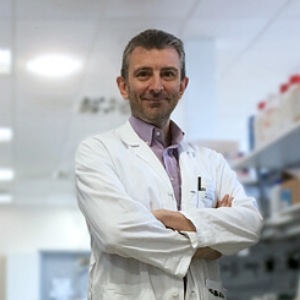The main protease of SARS-CoV-2 is called Mpro; without its action, the virus cannot replicate and infect new cells! Therefore, a molecule that “blunts” these viral scissors would be a compound with potential antiviral action.
These compounds are called inhibitors because they block the natural activity of the protease.
Mpro is an even more attractive target because of its uniqueness, i.e. the fact that in the human body there are no proteins with a similar structure and function, so a compound that inhibits the action of the viral protease would be less likely to have serious side effects on the patient.
Engineering molecules
How do we engineer a molecule that inhibits Mpro? If you are following us in this series, by now you know the answer: nothing better than visualizing the structure of the protein, seeing which portion of it constitutes the “blade” of the scissors and what shape it has in order to build something that prevents it from carrying out its molecular cuts.
What we want is to obtain a compound that has high affinity towards the protein, i.e. that is able to inhibit Mpro, even if present in small quantities. Furthermore, it is important that it has high specificity, i.e. avoiding its distraction from the task by other proteins in the cells.
.jpg?width=800&name=Blunting_SARS_CoV_scissors_protease_San_Raffaele_University%20(4).jpg)
.jpg)

.png?width=800&name=Blunting_SARS_CoV_scissors_protease_San_Raffaele_University%20(1).png)
.png?width=800&name=Blunting_SARS_CoV_scissors_protease_San_Raffaele_University%20(2).png)
.jpg?width=800&name=Blunting_SARS_CoV_scissors_protease_San_Raffaele_University%20(3).jpg)
.jpg?width=800&name=Blunting_SARS_CoV_scissors_protease_San_Raffaele_University%20(4).jpg)
.jpg?width=800&name=Blunting_SARS_CoV_scissors_protease_San_Raffaele_University%20(1).jpg)